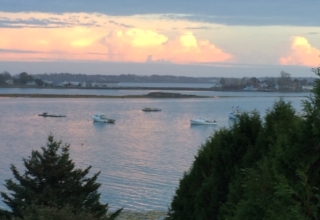
The Nature of Sanctuaries: Sanctuaries are as old as the human race. Humans, and even animals before them, seem to have always had sanctuaries of one kind of another. At least within a single animal family or species, there are time and places, seasons and locations, when animals of the same species will not hunt or kill each other. Primitive humans have always had their holy spots, their stone enclosures, their sacred trees, within the bounds of which you were safe, no one could harm you, and to which you also went for healing.
Long before the great European cathedrals were built, there were sacred spaces. There were times and seasons when warfare stopped, and healing could occur. Similarly, there were days (“the feast of fools”) when traditional hierarchies were turned on their head and alternative roles could be explored (not unlike our emerging use of Halloween as a day of pretend and altered roles for adults in many contemporary organizations) (Cox, 1969).
A sanctuary is three things: a place, a time, and a state of mind. A sanctuary is a place of safety or healing or transformation, usually a holy place. Sanctuary is a time when warfare or strife stops, a time when enmity can cease and reconciliation ensue, at least for the moment, and a time for reflection. Sanctuary is a state of mind, in an individual, a group, or a culture. It is a moment of rest, a moment when healing can occur, when we can stop long enough to get our bearings again, to find our center, and to set our course anew.
It is an important moment for an individual or for a society in this mid-21st Century world. Where do we go when we are challenged? Do we seek out false sanctuaries—such as are found in the use of mind-altering drugs, obsessive shopping for un-needed goods, or binge watching and mindless channel surfing? Do we just suffer and remain frozen in a state of inaction and despair? Do we find sanctuary—and then come out renewed and with new insights?
It should also be noted that all Wisdom Traditions insist on sanctuary. A wisely lived and productive life is impossible without sanctuary. On the other hand, the wise heart knows the need for time and solitude and reflection, as a wise gardener knows the need for seasons and care if plants are to grow and flourish, to give nourishment and beauty. Every Wisdom Tradition calls for both time alone and time engaged in community or society or “the marketplace,” alternating the two throughout the days and through a life. Only time alone can provide a deep and intimate relationship with the Self and all that is. Only time in community can hone Self to a mature level of application and service. Only alone can you hear yourself. Only in community can you hear others. The two are actually one.
Joseph Campbell brought this vision to our world during the 1980s with his books (and TV show) on myth (Campbell,1991). The hero typically starts at home, then goes out to be alone in the wilderness (including into sanctuary), faces their self, and then comes back richer. They then shares their riches with the community. Without going out (or inward) there are no riches. Without coming back, there is no value. We leave shallow and disoriented, we come back deeper and oriented to our own true North Star. A mature life (and a mature society) needs both.
Download Article














